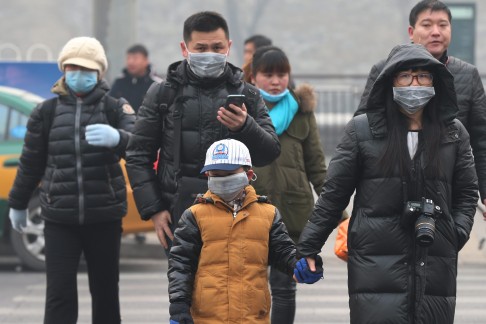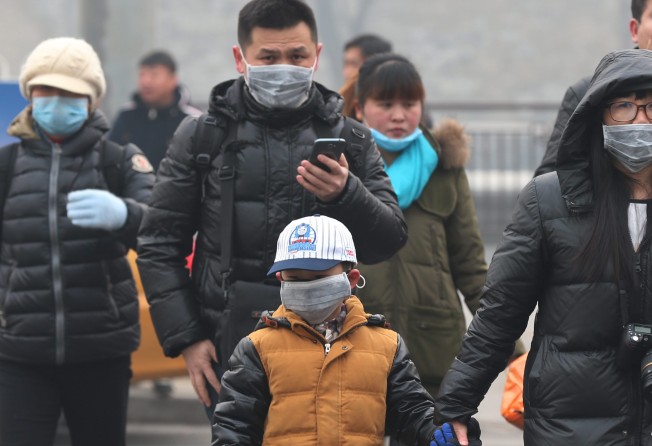
Heavy smog’s return in northern China masks all-too-fleeting memories of Beijing’s blue skies
Air quality in the capital described as 'heavily polluted' on Thursday with the hazardous levels of smog expected to remain across the region for several days


At noon on Thursday the air in Beijing was described as “heavily polluted” by Beijing’s Ministry of Environmental Protection.
Concentrations of PM2.5 – superfine particulate matter smaller than 2.5 microns in diameter, which lodge deep inside the lungs and are considered most dangerous to human health – led to the air quality index being measured at 160 micrograms per cubic metre – more than five times above the safety standards recommended by World Health Organisation.


Yet it did not last long: the capital’s air quality index had already returned to an “unhealthy” 158 the morning after the parade, the American Embassy in Beijing reported at the time.
The Beijing Morning Post reported on Thursday that the pollution was likely to continue, with air quality forecasts expected to be “moderately polluted” on Friday.
Nearby cities in Hebei province, including Baoding, Langfang, Tangshan and Qinhuangdao, also recorded heavy air pollution levels on Thursday morning.
Baoding, one of the mainland’s worst polluted cities, ordered half of all of its registered vehicles to be taken off city centre roads from Thursday to Saturday.
The city’s officials issued an emergency notice on Wednesday evening after heavy pollution was forecast for the following three days.
Drivers will be fined if they found to be breaking the ban.
The city’s government has introduced a series of measures to try to improve air quality levels after its mayor apologised for its air quality was constantly ranking the worst among mainland cities in Surveys last year.
Despite measures to reduce air pollution for the military parade being introduced during the second half of August, new statistics by the environmental protection bureau show that seven out of the 10 worst polluted cities on the mainland last month were still in Hebei province.
The National Administration of Surveying, Mapping and Geoinformation said on Wednesday that two “heavy air pollution belts” had formed in the Beijing-Tianjin-Hebei areas as a result of urban areas rapidly expanding since the 1990s.
One was the Beijing-Tianjin-Tangshan belt and the other the Shijiazhuang-Xingtai-Handan belt in the southern part of the region, the Xinhua news agency reported.
The total size of urban areas in the Beijing-Tianjin-Hebei region more than doubled between 1990 and 2013 – swallowing up nearly 2,000 square kilometre of agricultural land, a survey by the administration department said.
The number of factories and other causes of air pollution in those areas increased from 17,000 in 2007 to more than 38,000 in 2013, the survey found.